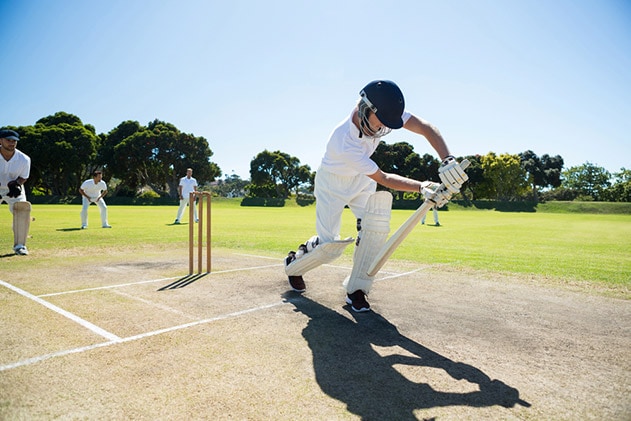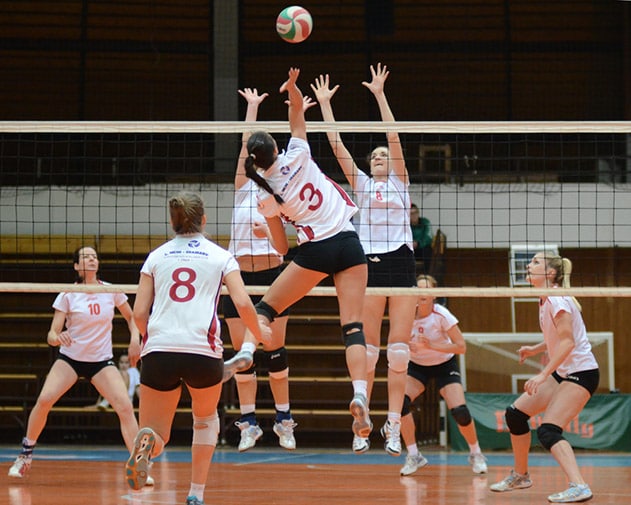
- Semiconductor Technology Now
Report Series
First used for making calls in cricket
The U.K.-based Hawk-Eye Innovations, which has made huge advances in ball tracking and video refereeing, was established in 2001. This technology was developed to help umpires make decisions in cricket, a highly popular game in the country. In the sport of cricket, a bowler (equivalent to the pitcher in baseball) throws the ball toward a target called a “wicket” located behind the batsman, and the batsman tries to hit back the ball to defend the wicket. It is said that the technology was first used in sports broadcasting to show the trajectory of the ball being thrown by the bowler.
 |
Even today, this technology is most frequently used in cricket, followed by tennis and then soccer. A video refereeing system called “television match official (TMO)” is also beginning to be introduced into rugby. By now, some variation of this technology is being used in refereeing services in 25 types of sports. As a result, technology is being utilized in 15,000 games or events each year at more than 500 stadiums in 90 countries. One unusual application of video refereeing is its use in horse racing, where it is used to check whether a horse is running at an angle. In motorsports, the technology is used in races organized by the National Association for Stock Car Auto Racing (NASCAR) in the U.S. to check car dimensions and illegal crew entry/exit. Track and field events also use such technology to check for illegal baton handoff.
Ball tracking and video synthesis/replay
Hawk-Eye’s technology must be customized for each sport or game by, for example, changing the number of cameras. With tennis, 10 or so cameras are used, while soccer requires 14 cameras to track the game field since 6 to 7 cameras are needed for each goal. For video refereeing, 12 cameras are used for sports broadcasting in normal soccer games in Germany’s Bundesliga, but 35 cameras are used in the World Cup. The areas video refereeing needs to focus on vary depending on the sport.
The technology can be roughly classified into ball tracking and video replay functions. The ball-tracking technology tracks the ball's trajectory being hit or thrown to facilitate analysis or judgment calls. Video replay literally replays the video. However, instead of simply replaying a single video, it synthesizes video images from multiple cameras and converts the ball into a graphic representation to be used to ensure fair refereeing.
The ball-tracking technology and the video replay function assist with the referee’s decision-making and allow the spectators to share in the process as they wait for the official decision to be made and announced. Since a “challenge” in tennis takes several seconds to be resolved with an official decision, some players are said to dislike the technology claiming that the disruption breaks the game’s rhythm (Reference 2).
In cricket, a rule prohibits a batsman from shielding the wicket with his or her body. Video replay is being used to determine whether this rule is being violated. In volleyball, video replay is used for detecting net contact. For example, Japan’s V.LEAGUE introduced the Hawk-Eye system's challenge system starting with the 2019-20 season (Reference 2). For video refereeing, the system in V.LEAGUE uses two cameras to detect faults such as net contact and four cameras on each side facing the net to detect blocking, block touch, and the position of the ball next to the line. Additionally, volleyball spectators’ degree of satisfaction is said to increase when the trajectory of the spiked ball is drawn on the screen.
 |
Desire for fair play and advances in the technology behind the boom
One of the reasons this technology is spreading is that it can lead to fair play. Now that spectators themselves can use their own cameras to capture images and video footage, someone is sure to have captured a critical image. If that person posts the image on social media, the decision that should have been called becomes clear. Therefore, adopting this system into the game and showing all spectators that fair decisions will increase their confidence in the refereeing system.
As explained below, technological advances are also helping with the adoption of the technology. Advances in camera performance and image analysis algorithms have shortened the time required for video refereeing so that nowadays, it is possible for a decision to be made in less than one second. Precision at the millimeter level was required when the challenge system was adopted in tennis, and it is said that the technology was developed in response.
Ball tracking demonstrating strength in tennis and soccer
In tennis, players are allowed to make three challenges per game, but if ball tracking could be used throughout the entire game, the challenge system itself would become unnecessary. Actually, ball tracking was used throughout the entire ATP World Tour in November 2017, with a line refereeing system presumably used for making delicate calls.
A system called “goal-line technology,” which acquired a license from the International Federation of Association Football (FIFA) for the first time, determines when the ball has completely crossed the goal line between the goalposts. The system was introduced into England’s Premier League in the 2013/14 season and in Germany’s Bundesliga in the 2015/16 season. It is also being used in Italy’s Serie A.



















